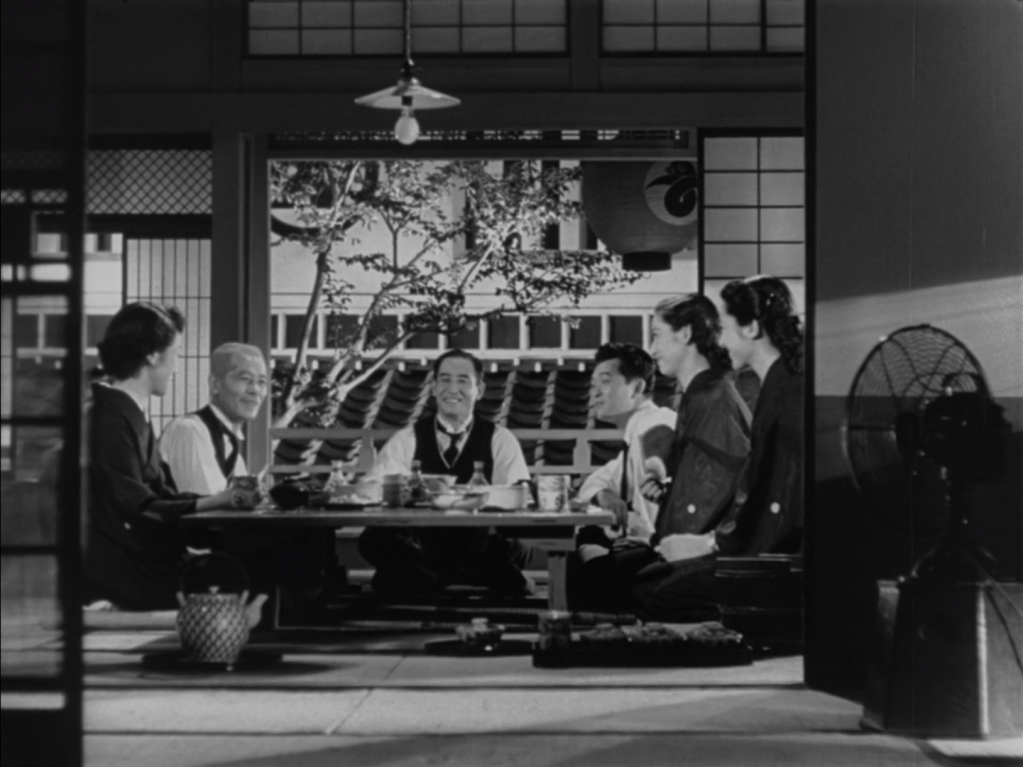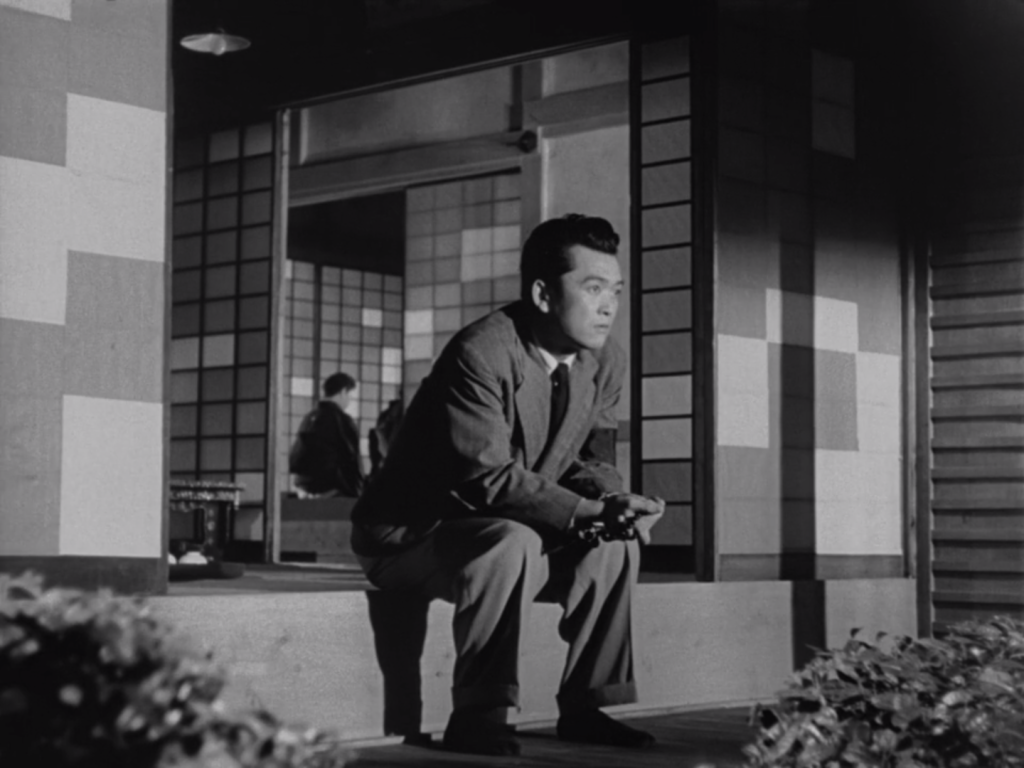Tagged: Tokyo Story
Thoughts on Yasujirō Ozu’s TOKYO STORY
When discussing Ozu, film critics invariably focus on two things: the formal composition of his images, and the slow pace. For that reason I’d never felt compelled to check out the work myself. Sitting down to TOKYO STORY (1953), I was expecting something arty and rarefied—a homework movie that would probably test my patience. What I got instead was a family drama, packed with emotion.
It’s a simple enough story: Shūkichi and Tomi are a retired couple who travel by train to Tokyo to visit their adult children. But the children are busy with their work and their own lives, and the presence of their parents is a disruption. No one puts much effort into accommodating them, in fact, they shuttle the parents off to a spa for a few days “to rest.” And so, the visit goes badly—though this is barely acknowledged by anyone.

This is how Ozu shoots interiors: camera low, to capture people kneeling or sitting on the floor. (There is exactly one moving camera shot in TOKYO STORY, a slow dolly at around the one hour mark.) With sightlines nearly always running parallel and perpendicular to the walls, the resulting compositions are a map of rectangles and 90-degree angles. In these spaces, emotions are also flattened and constrained. Diagonals are rarely seen and usually occur outdoors, in placid transitional shots interleaved throughout the film: a train chugging along a track, or white laundry fluttering on a clothesline.
There are two notable exceptions where the geometry of the characters’ lives is ruptured by strong emotion. The first is a barroom scene, where the elderly Shūkichi gets drunk and rowdy with a couple of old friends and complains about his no-good kids.
The second time comes late in the film, when all those offspring gather for a funeral. For shortly after the elderly couple return home from their trip to Tokyo, the mother Tomi falls ill and dies. Here, Ozu breaks out the diagonals: to capture the entire grieving family in a single shot, or to focus on the son who is overwhelmed and flees the ceremony.

Here too is where the weight of this story, which up to now may have felt slight, suddenly accrues into something deeply moving.
After the funeral, the family gathers in Shūkichi’s home for a meal. Ozu returns to his squared-off compositions as the chit-chat meanders from the logistics of taking the train home to what should be done with mother’s clothes. Soon enough, most of the kids are on their way, ready to resume lives fundamentally unchanged by the experience.
The exceptions are the youngest daughter, Kyoko, a schoolteacher who still lives with her father, and Noriko, the daughter-in-law (who’s consistently shown more concern for Shūkichi’s well-being than his own flesh-and-blood offspring). After they’ve left, Kyoko complains bitterly about her siblings, condemning them as selfish. Noriko, however, is pragmatic and realistic. She defends them, saying they have their own concerns, and acknowledges the selfishness she perceives in herself as well.
In a following scene, even the father admits guilt over his own denial and deferment of emotion. Staring down a lonely future, he muses on his relationship with his late wife: “I’d have been nicer to her if I’d known it would come to this.” Barring a divorce, a marriage can only end in a finite number of ways, yet Shūkichi seems to treat death as a surprise.
“Isn’t life disappointing?” Kyoko says.
“Yes, it is,” Noriko replies.
This was the moment in the film that was most arresting for me. Films—especially American films—are so often about massaging you into feeling good about yourself, about justifying your life and choices, and providing a narrative that promises to make sense out of chaos. TOKYO STORY isn’t that. It isn’t a balm. It isn’t constructed to make you feel good. And yet it does, but on a deeper level: one based on recognition, and maybe commiseration, and certainly on the bracing, freeing sensation of being told the truth.